You may have seen DALL·E mini posts appearing on social media for a little while now – it’s been viral for a couple of weeks, according to Know Your Meme. It’s an artificial intelligence model for producing images, operating as an open-source project mimicking the DALL·E system from company OpenAI but trained on a smaller dataset. Actually, since I had a play with this yesterday it’s renamed itself at the request of OpenAI and is now called craiyon. Since the requests all take between 1-3 mins to generate, I’m not going to re-generate all the images in this post using craiyon so that’s why they have the old ‘DALL·E mini’ branding.
AI image generation is a massively impressive technical achievement, of course. craiyon doesn’t create as stunning images as DALL·E 2, but still it can create some ‘wow’s.
What’s interesting, sometimes, is how it interprets a prompt. The data craiyon is trained on is “unfiltered data from the Internet, limited to pictures with English descriptions” according to the project’s statement on bias, and this can lead to problems including that the images may “reinforce or exacerbate societal biases”.
To see that in action, we can take a look at how the model manifests cultural expression around mathematics. When I gave it the simple prompt ‘mathematics’, it produced this.
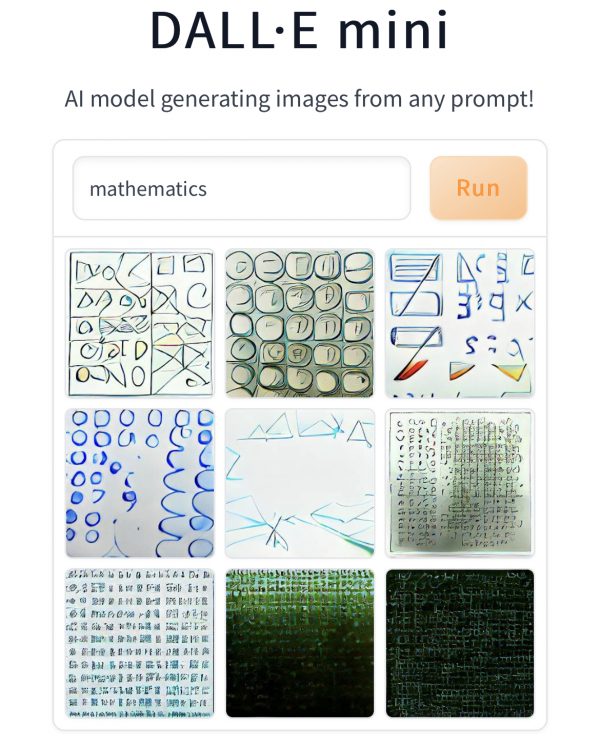
Honestly, having spent a little time in online image banks, I was expecting people at blackboards or a big swirl of floaty equations. By comparison, some of these these look fairly sensible! Actually, the prompt ‘data science’ got more of the swirl I was expecting.
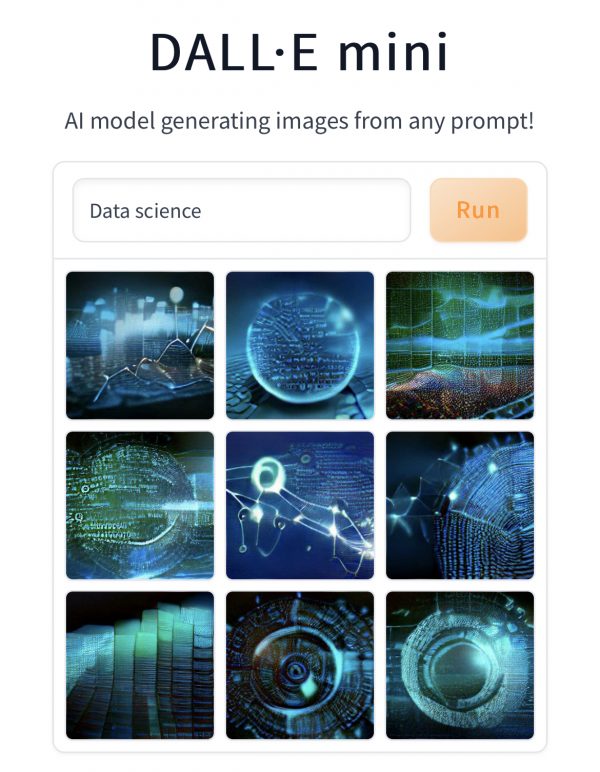
I tried ‘doing mathematics’, and it took this to be students in a teaching context.
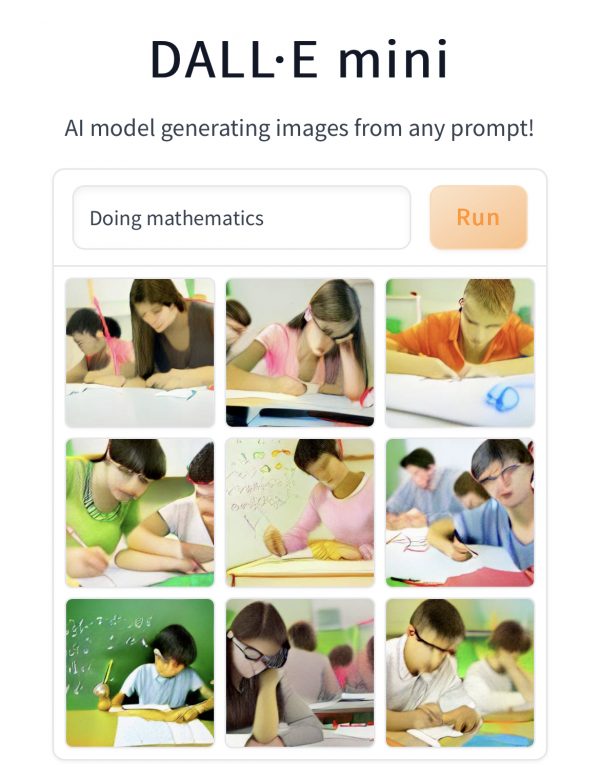
I got a blackboard full of sort-of mathematical notation when I asked for one.
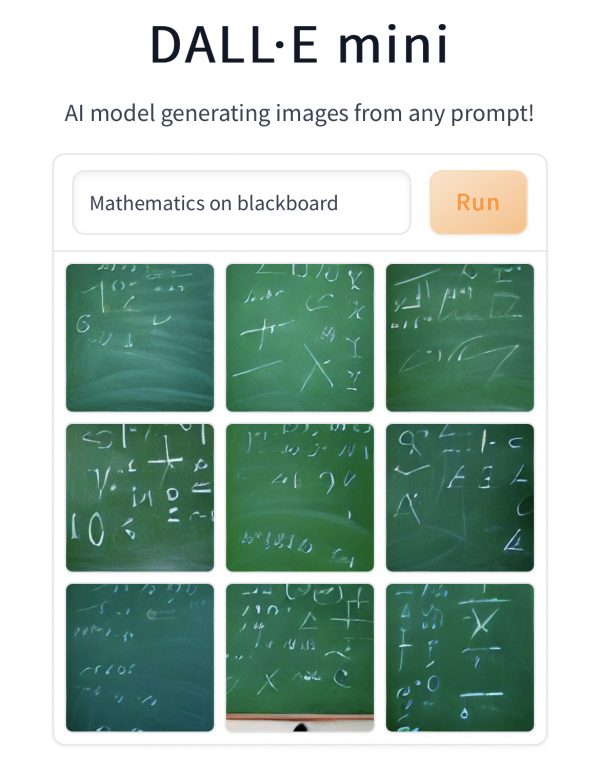
But I really struggled to get it to see mathematics as existing naturally in a context where people were interacting with it. You can see here I’m trying some pop culture elements, because I’ve seen it work well with pop culture online. (By the way, the Luke Skywalker Fields Medal collection I accidentally created may be something worth seeing.)

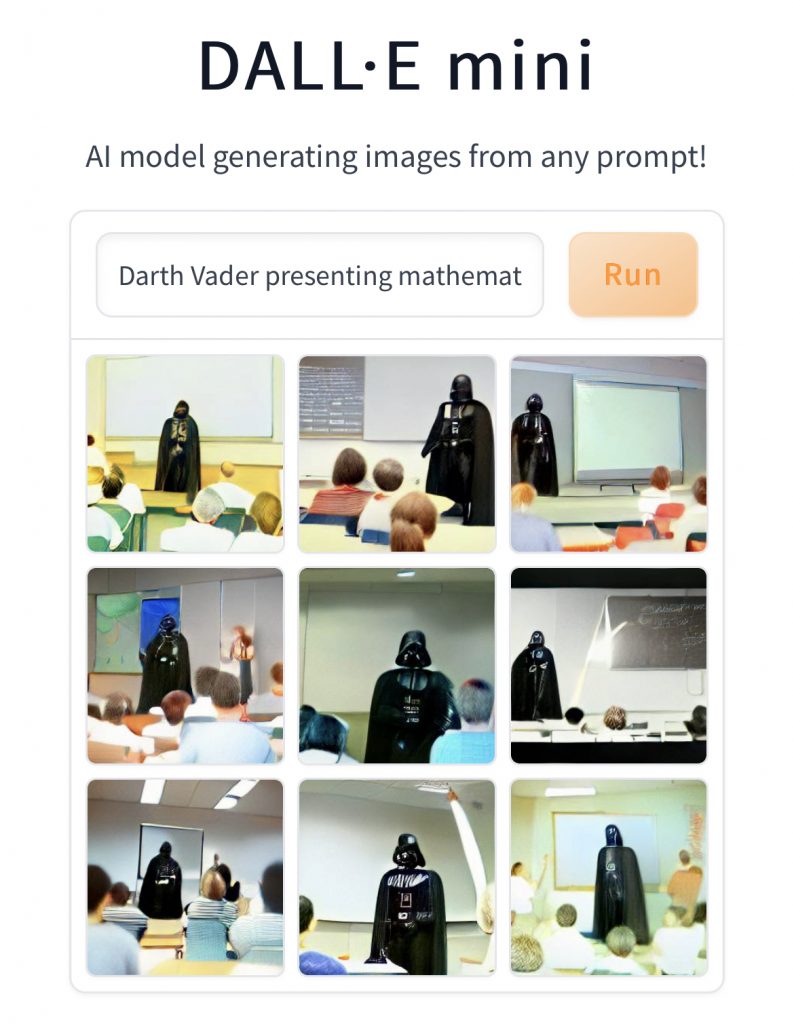
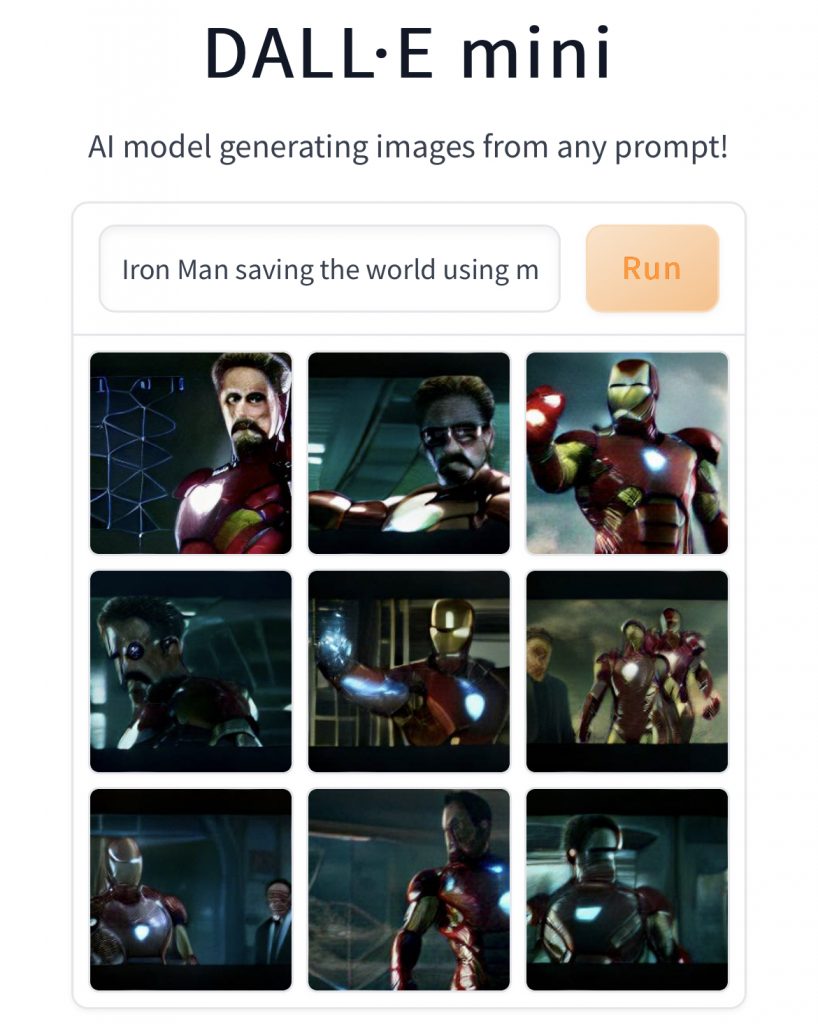
I tried some other disciplines that interact with mathematics, to see how it would represent these. Curiously, for social science it has people writing mathematics on blackboards!
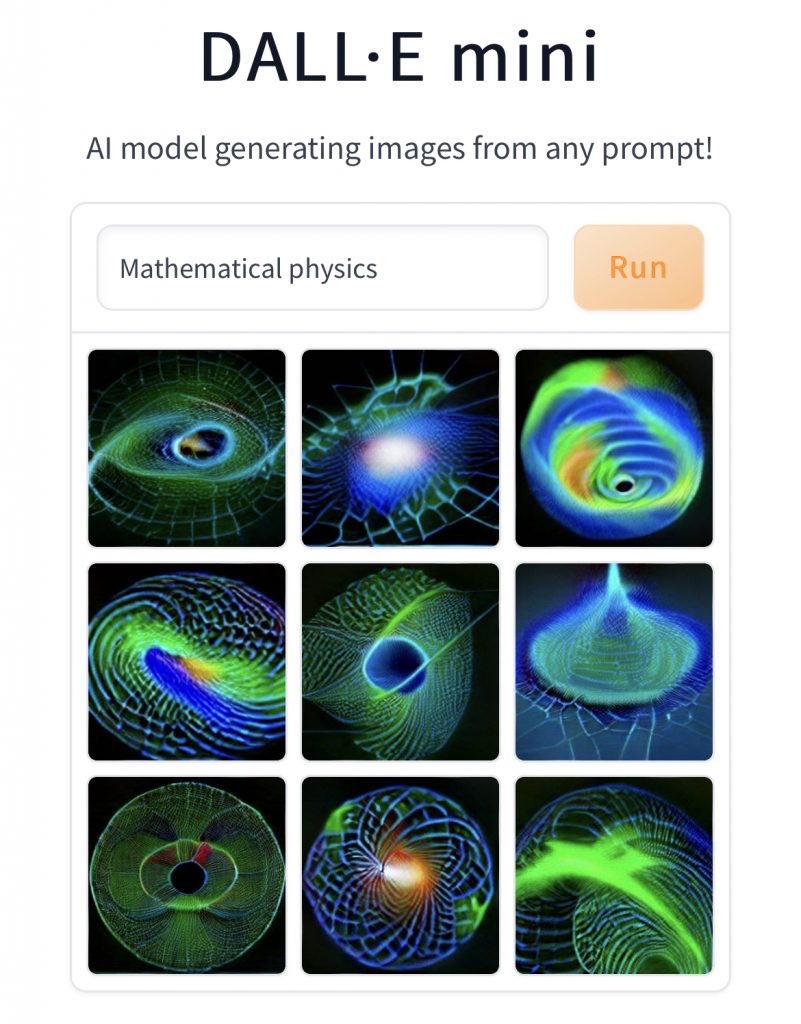
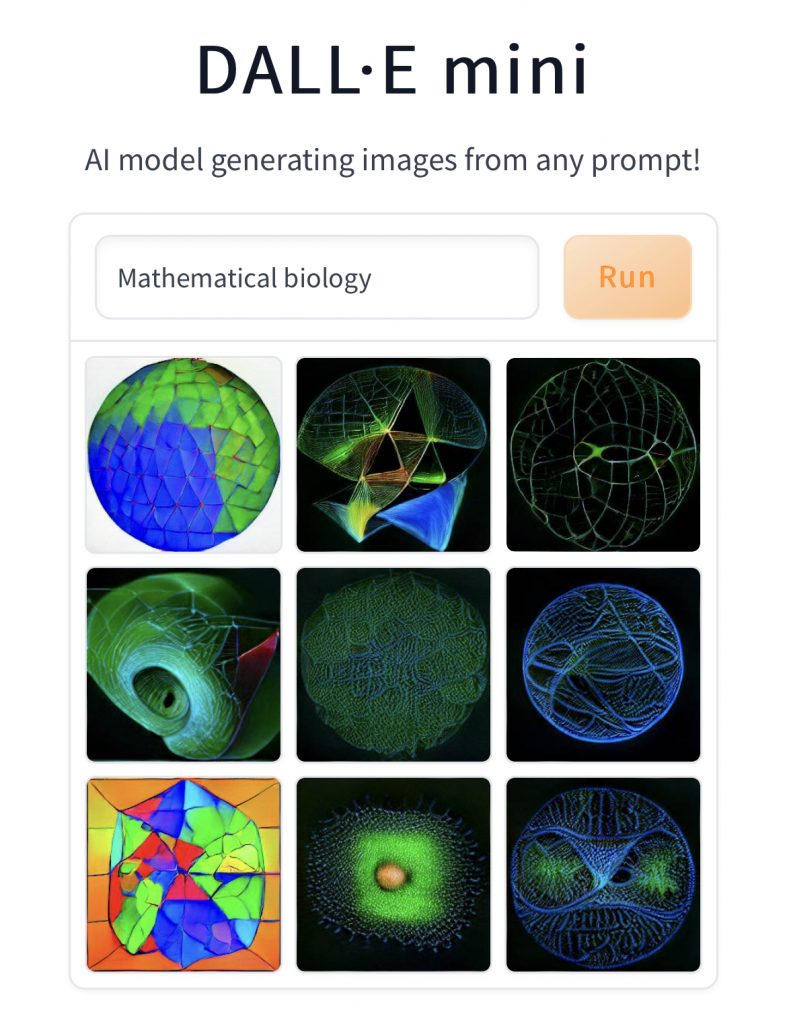
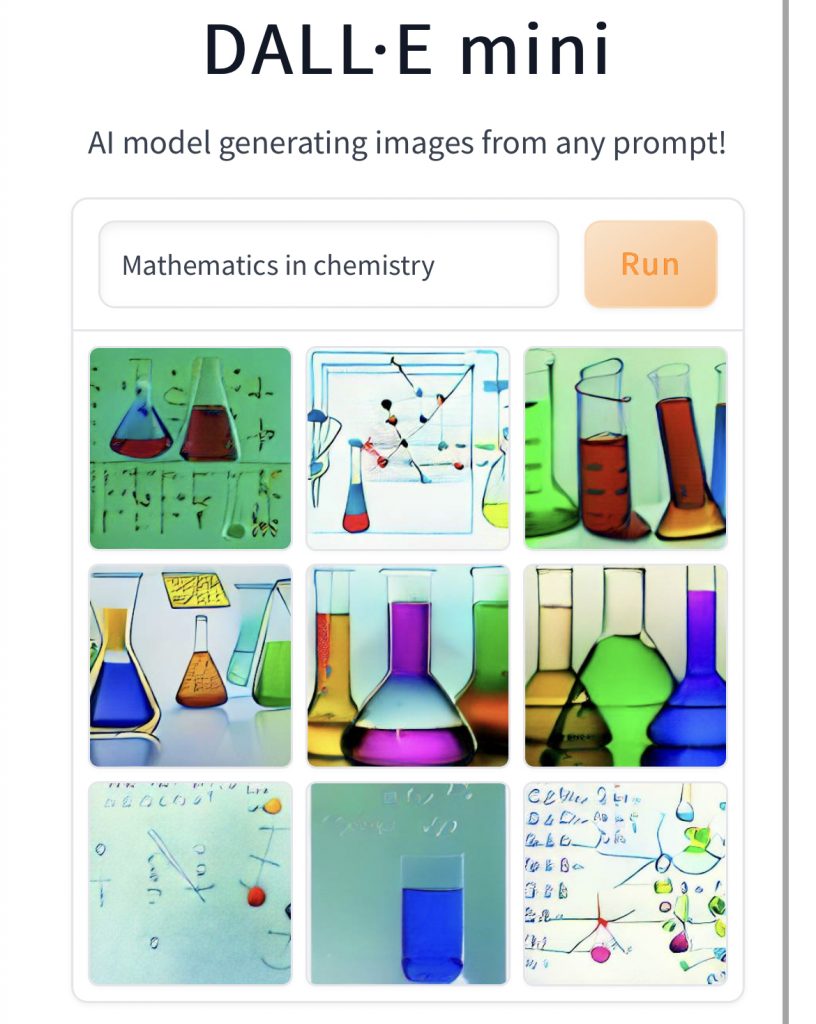
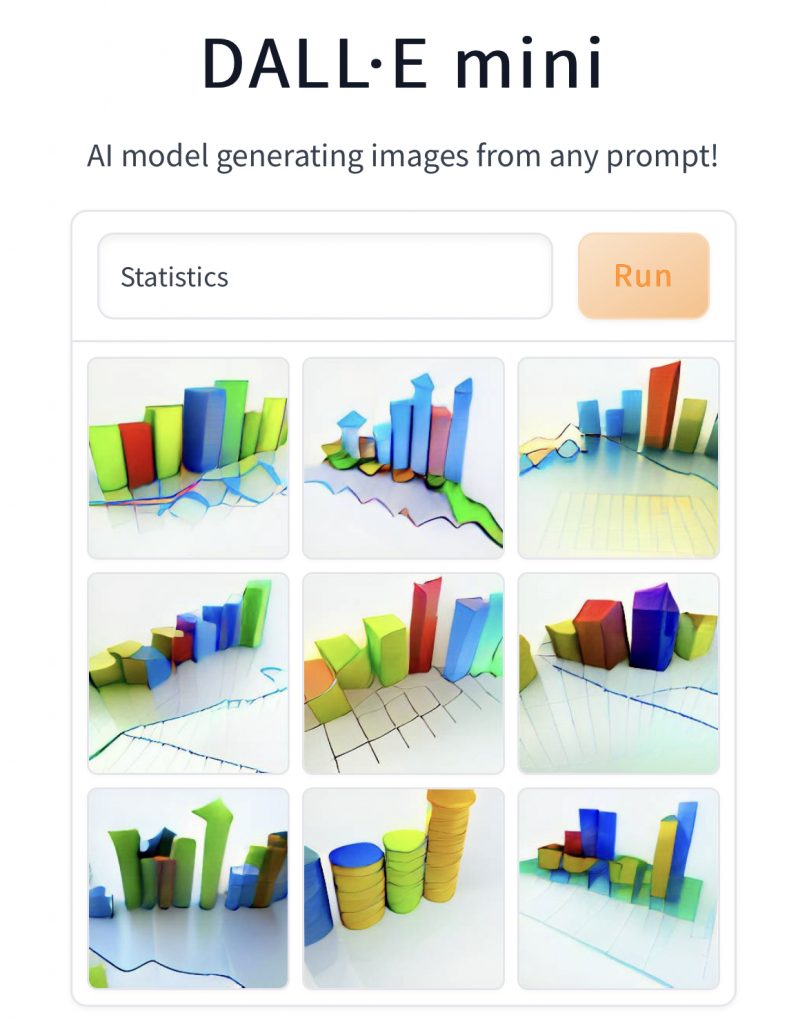

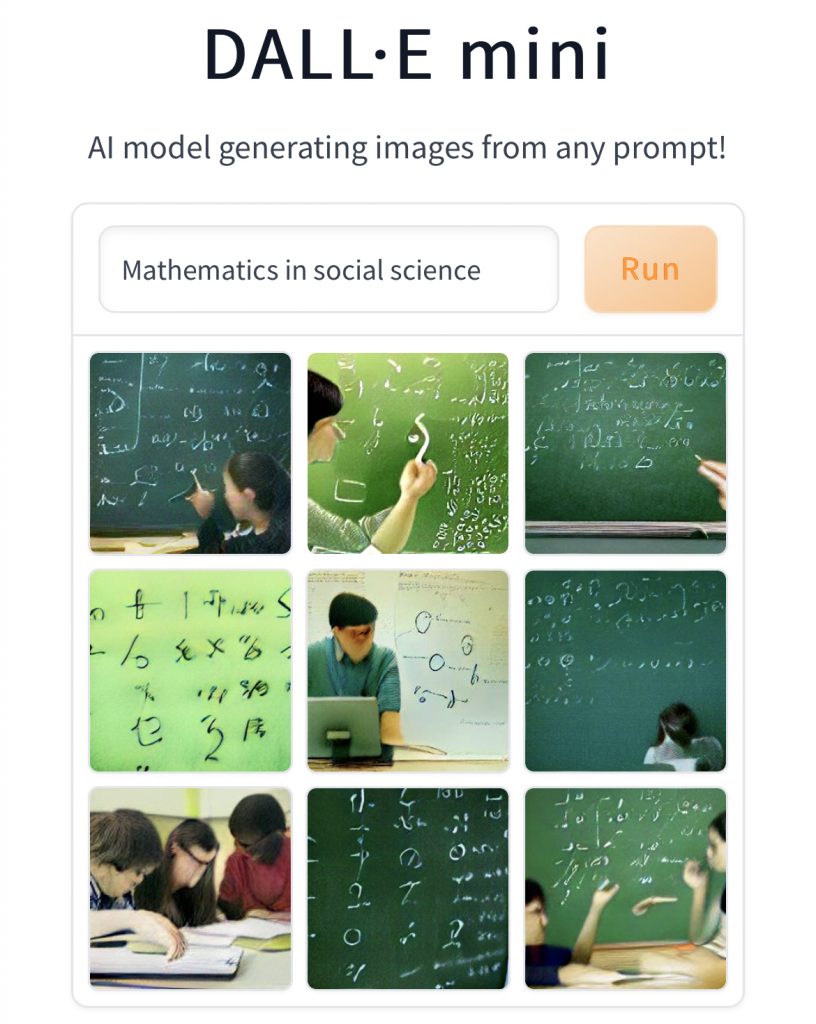
As well as representations of the discipline, there is also the issue of representing the people who do it. What does craiyon think a mathematician looks like?

I was struck, apart from the obvious, by how these were all black and white images. Perhaps it’s thinking of ‘mathematician’ as a concept that predates colour photography. I tried ‘modern mathematician’ but got very similar results! I generated ‘historial mathematician’ for comparison and yes, it seems to think the ones above are modern!
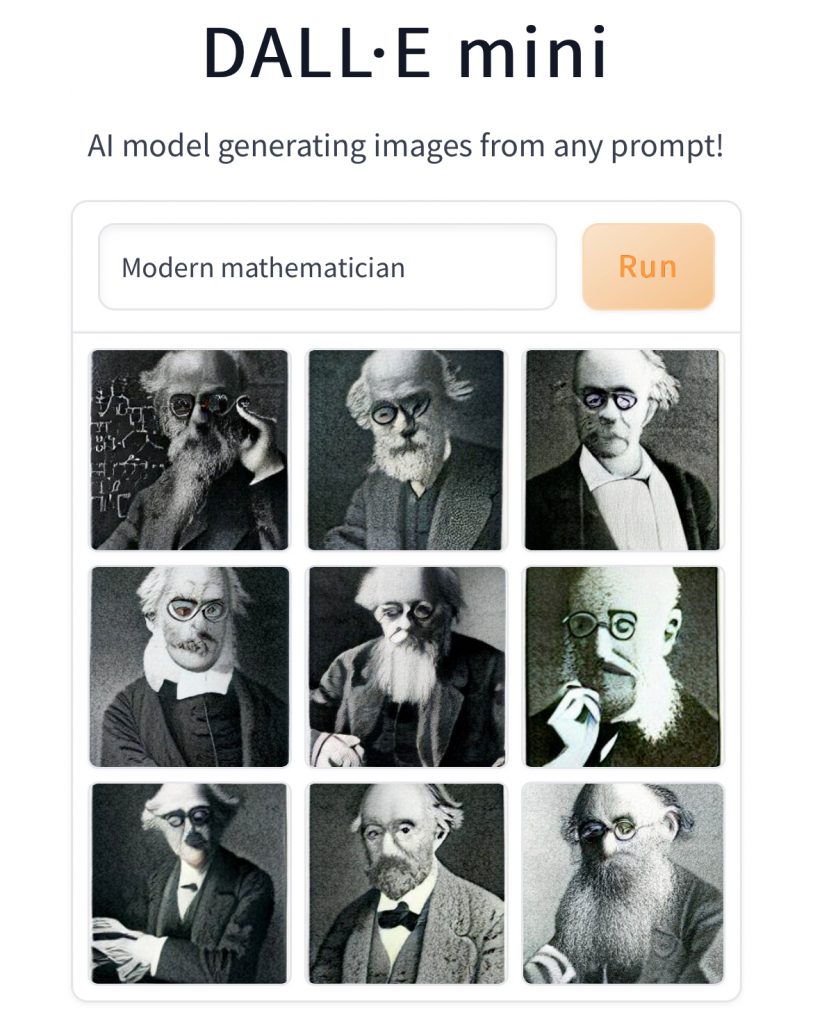

I tried a few obvious ways to adjust this output, with extremely mixed results.


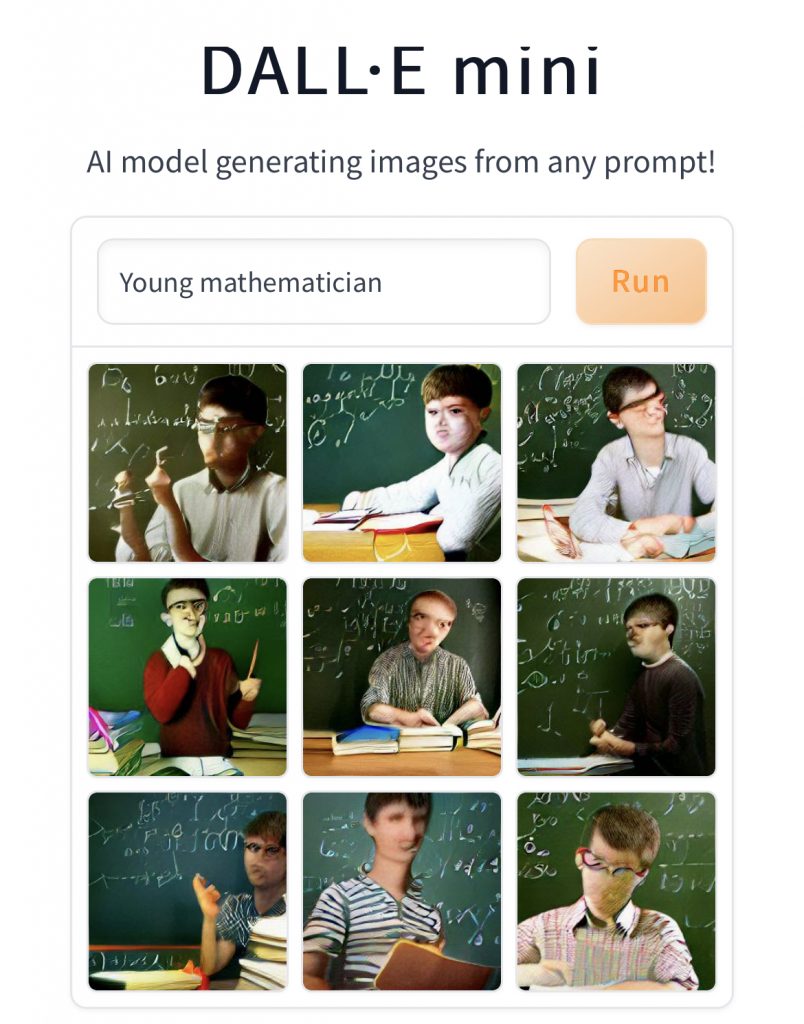
I got almost-full-colour from 21st century mathematician!
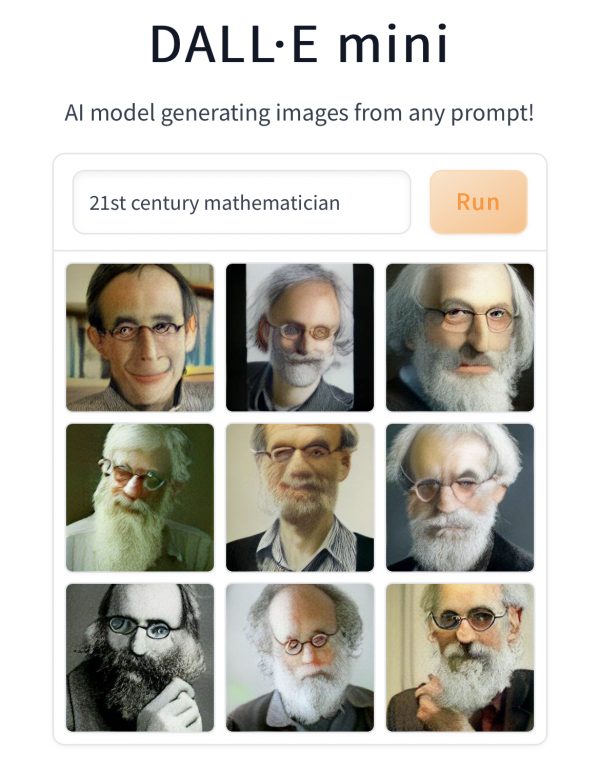
Does it surprise me that a model trained on raw data from the internet would see mathematics as a collection of meaningless symbols being taught (not otherwise developed) by old white men with beards from a bygone age? Of course not. But it’s interesting to explore and think about how we embed these problems of bias in new developing systems. Also I got to put various pop culture characters in history of maths locations, so there’s that.
One Response to “What does craiyon/DALL·E mini ‘think’ mathematics and mathematicians look like?”